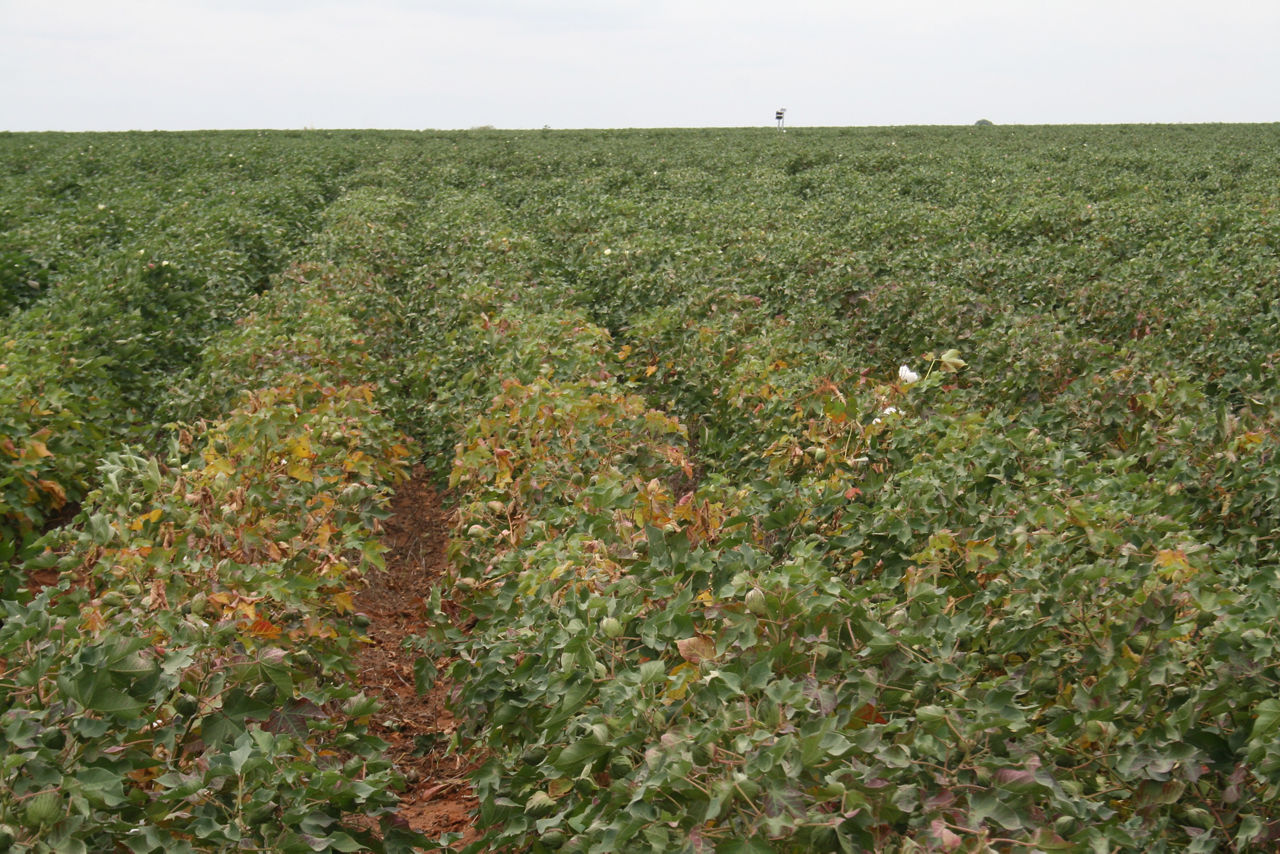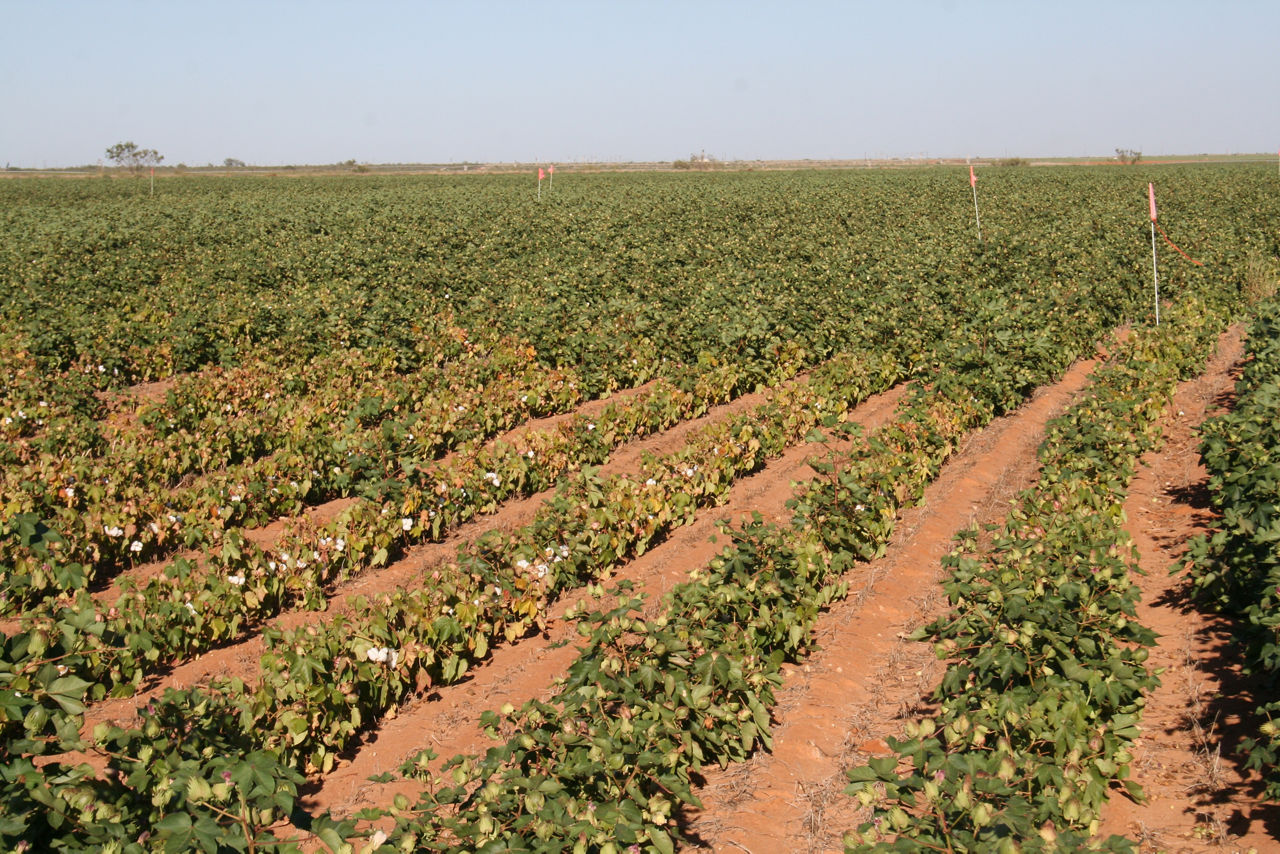How do I know if Nematodes are Impacting my Cotton Crop?
June 26, 2024
What symptoms in the field may indicate nematode damage?
Visual aboveground injury symptoms include the appearance of drought stress (wilting), chlorosis, thin stands, stunting, and yellowing plants (Figure 1).1,2 Belowground symptoms may include stunted roots, swollen roots, a lack of lateral root development, or necrotic lesions depending on the species of nematode parasitizing the plant. Nematode damage to cotton late in the season can lead to premature death, defoliation, and maturity (Figure 2).2


My field has adequate moisture and fertility, so why are there areas of the field that look drought stressed or nutrient deficient?
Nematodes damage plant roots by puncturing root cells and feeding on the plants’ nutrients. This damage reduces the availability of moisture and nutrients to the plant. Affected areas tend to show up in “patches” or “hot spots” rather than uniformly across a field. Premature death can occur late in the season, which can also result in cotton plants maturing prematurely.1
Which nematode species are the most prevalent in the cotton growing areas of the US? What are their feeding habits and infestation symptoms?
Based on their feeding habits, nematodes are considered to be either:
- Endoparasitic – Nematodes that enter the root structure and remain there throughout their life cycle.2
- Ectoparasitic – Nematodes that live in the soil and complete their life cycle outside of plant roots.2
The feeding habits of a nematode species can aid in diagnosing plant injury symptoms that are observed in the field.
Southern Root-Knot Nematode
The southern root-knot nematode is an endoparasitic nematode found across all cotton growing areas of the United States. It occurs primarily in sandy soils, usually in a clustered distribution, and can cause greater cotton yield losses than any other nematode species. The root-knot nematode forms galls—which are easily identified on the roots—that interfere with water and nutrient uptake by the plant. Galling can be seen as early as five weeks following planting and is clearly visible when an infested plant is carefully removed from the soil (Figure 3).2 Plants damaged by southern root-knot nematode are often grouped in patches of a field, with no distinct pattern. This nematode is also linked to greater incidence and severity of Fusarium wilt.1,2,3 If cotton plants are infected with Fusarium wilt, root-knot nematode is likely present.1

Reniform Nematode
The reniform nematode is semi-endoparasitic, as the front part of the nematode’s body is embedded within the root while the rear portion remains outside. This nematode is identifiable by the kidney (or reniform) shape of a swollen adult female. It is more prevalent in silty soils in warmer regions of the Cotton Belt. Reniform nematode distribution within a field is usually more uniform than southern root-knot nematode distribution.1,2,3 Reniform nematode usually occurs throughout the field but may not cause damage in every area in which it is present.2
Columbia Lance Nematode
The Columbia lance nematode is endoparasitic and more common in the coastal areas of the Cotton Belt, preferring soils with at least 80% sand. This nematode is relatively large and can cause considerable damage. Symptoms of Columbia lance nematode damage include smaller-than-normal root systems without galls. Fusarium wilt and seedling diseases are often associated with this species.1,2,3
Sting Nematode
The sting nematode is ectoparasitic and its distribution is limited to very sandy soils (at least 85% sand). It feeds primarily on root tips, which can result in roots having a short, stubby appearance. Damage from this species is usually restricted to small areas within a field.3
How can I find out for sure if nematodes are present, and how do I determine which species of nematode I have in my field?
Soil sampling should be conducted to confirm the presence of nematodes and to identify the species. For more information about when and how to soil sample, refer to Sampling for Soil Nematodes (https://www.cropscience.bayer.us/articles/dad/how-to-sample-soil-for-nematodes).
Can nematodes impact yield and profit potential?
Lower yields caused by nematodes may be misattributed to wet or dry areas of the field, fertility problems, insect damage, or disease. Nematode damage costs cotton producers millions of dollars per year. Yield losses from nematodes can range from slight to as high as 50%.1
How does soil texture impact nematode infestations?
Although nematodes can be found across various soil types, damage is more likely to occur in coarser textured soils such as sandy loams.1,3 In general, as the clay content of a soil increases, the potential for injury by nematodes decreases.1 In clayey soils with a higher water holding capacity, southern root-knot nematode has been observed to have lower egg hatch rates and reduced motility, which in turn reduces potential yield damage.4
Can planting certain crops increase or decrease the risk of nematode infestations?
Fields planted to cotton year after year may have a higher incidence of nematode damage. Rotating to a non-host crop is recommended, but knowing the nematode species is paramount when selecting a rotation (Table 1).3
Table 1. Hosts versus non-hosts of the primary nematodes that affect cotton.

What are the damage thresholds for nematodes in cotton?
Damage thresholds for nematodes can vary by state or region. Contact your state university or local extension specialist for recommendations specific to your location.
Sources
1Overstreet, C. and Xavier-Mis, D. 2016. Nematode problems on cotton. Louisiana State University. https://www.lsuagcenter.com/profiles/coverstreet/articles/page1460046020798
2Understanding cotton nematodes. National Cotton Council of America. https://www.cotton.org/tech/pest/nematode/ucn.cfm
3Mueller, J., Kirkpatrick, T., Overstreet, C., Koenning, S., Kemerait, B., and Nichols, B. 2012. Managing nematodes in cotton-based cropping systems. Cotton Incorporated. https://www.cottoninc.com/wp-content/uploads/2015/12/2012-Managing-Nematodes.pdf
4Koenning, S.R., Kirkpatrick, T.L., Starr, J.L., Wrather, J.A., Walker, N.R., and Mueller, J.D. 2004. Plant-parasitic nematodes attacking cotton in the United States. Plant Disease. 88(2): 100–113. https://apsjournals.apsnet.org/doi/pdfplus/10.1094/PDIS.2004.88.2.100
Web sources verified 06/17/2024. 1411_129913